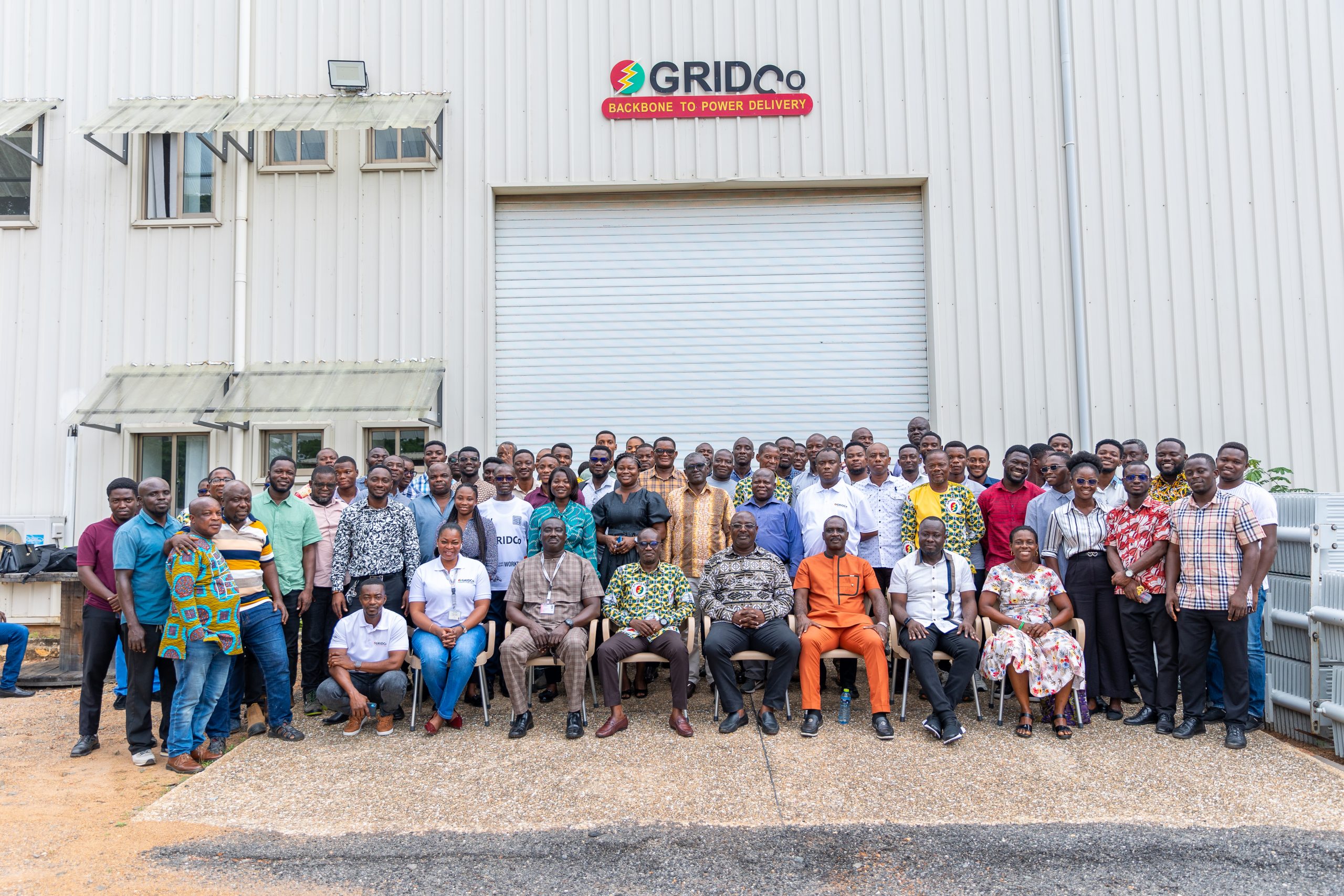Right of Way Team Engagements are in the last lap, with the team traversing the length and breadth of GRIDCo’s Operational Areas to sensitise staff of the new Right of Way Policy, which has been operational since March 2024.
Ing. Kafui Kportufe Manager, RoW Vegetation Control, led the engagement. During his presentation on the policy, he emphasised the key objectives as, the triggers, the protection challenges, permissible use under the policy and the RoW maintenance.
Also presenting at the Akosombo Area was Major Lawrence Appiah (Rtd.) who focused on ‘Right of Way Protection’. In his delivery, he shared photos of encroachment on the RoWs and efforts being made to halt activities.
After the presentation, staff of the Akosombo Area generated a very lively question and answer session. Mr. Kwame Boadi, Principal Environmental Officer and Chief Technician Engineer, Raphael Kornor supported Ing. Kafui and Major Appiah to address the questions raised. Here are some highlights of the issues raised.
Q. Can’t GRIDCo just cut ‘danger trees’ which pose a threat to the transmission lines?
A. GRIDCo cannot unilaterally cut trees. We are required to engage the community and together, agree to eliminate the danger trees. Contractors are also not allowed to cut trees because their approach could negatively affect the transmission line. So GRIDCo takes charge of that.
Q. What are the potential areas that people would be in violation of under the RoW Policy?
A. Any action or inaction against the Decide Rules of the policy will be considered a violation of the RoW policy. Thus, one needs to be well acquainted with the policy to avoid violation.
Q. Many communities claim GRIDCo owes them. That is why they believe they are entitled to the RoW. What is being done about that?
A. GRIDCo has a legacy debt which it is currently addressing. LMD urges the Lines Team to inform such claimants of the procedure by firstly writing to to the Chief Executive with all the relevant documentation attached for the verification of their claims, based on which a decision about payment will be made.
Q. Do we have emergency phone lines? If so, whom do I report to? An emergency response line will be more helpful, I believe.
A. For all staff who work in GRIDCo, please follow protocol by informing your direct Supervisor/ Manager or staff of the Land Management Department of any unusual activity in the RoW. In time a toll-free number will be set up to aid external stakeholders in particular.
Q. Where is the safety element in the RoW Management? I ask because the strategy so far has been to clear the entire area under the line.
A. Safety Guidelines under and around the transmission lines remain in place. However, the reason for permissible use (allowing specified non-threatening activities under the lines) is to enhance protection of the RoW. LMD will collaborate with the Operational Areas to decide who is granted permissible use or access to farm or operate under the transmission line.
Q. It was indicated that GRIDCo is to patrol the entire transmission infrastructure at least twice a year. This gap in timeline may cause people to take advantage to encroach. What will be done to prevent this?
A. Patrolin of the RoW is the minimum. So, where a RoW is prone to encroachment or any inimical human activity, patrolling will be increased to curtail any unauthorised activity.
Q. The rational of protecting the RoW from encroachment is to ensure the safety of life and property. Knowing the danger of being under a high voltage line, isn’t it contradictory to agree for the ROW to be used for some activities?
A. The objective of the policy is to ensure that our RoWs are managed and protected in a manner that promote reliable power evacuation. Therefore adoption of the sustainable actives to be carried out under the RoW in line with Regulation 1(g)(Ii) of L.I 542 is in the overall interest of displacing inimical and unauthorized activities from RoW.
Q. What about encroachment under the Buduburam Lines. What will happen to such a settlement?
A. A livelihood restoration programme will be outlined to guide the smooth relocation of the encroachments from the RoW








